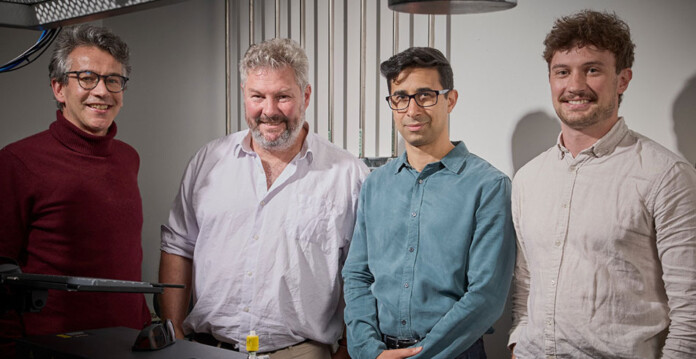
University of New South Wales (UNSW) researchers are working towards a new generation of solar technology that could make sunlight work smarter—by turning one particle of light into two packets of energy.
In the race to make solar energy cheaper and more efficient, a team of UNSW Sydney scientists and engineers have found a way to push past one of the biggest limits in renewable technology.
Singlet fission is a process where a single particle of light—a photon—can be split into two packets of energy, effectively doubling the electrical output when applied to technologies harnessing the Sun.
Related article: Singlet fission could supercharge next-gen solar cells
In a recent study, the UNSW team—known as ‘Omega Silicon’—showed how this works on an organic material that could one day be mass-produced specifically for use with solar panels.
“A lot of the energy from light in a solar cell is wasted as heat—which itself is also a form of energy,” says Dr Ben Carwithen, a postdoctoral researcher at UNSW’s School of Chemistry.
“We’re finding ways to take that wasted energy and turn it into more electricity instead.”
Most of today’s solar panels are made from silicon—a reliable and cheap technology. However, there are limits to silicon’s efficiency, with the best commercial cells currently converting about 27% of sunlight into electricity. The theoretical ceiling is about 29.4%.
Singlet fission offers a way past that barrier. When sunlight hits certain organic materials, one high-energy photon can produce two lower-energy excitations. So, two packets of usable energy are produced, instead of just one.
“Introducing singlet fission into a silicon solar panel will increase its efficiency,” says Professor Ned Ekins-Daukes, project lead and head of UNSW’s School of Photovoltaic & Renewable Energy Engineering.
“It enables a molecular layer to supply additional current to the panel.”
The UNSW team has now demonstrated that a compound called DPND, or dipyrrolonaphthyridinedione, can do the same job while remaining stable under real-world outdoor conditions.
“We’ve shown that you can interface silicon with this stable material, which undergoes singlet fission, and then injects extra electrical charge,” Dr Carwithen says.
“It’s still an early step, but it’s the first demonstration that this can actually work in a realistic system.”
The research is part of a broader national effort to make solar power even cheaper and more powerful.
The Australian Renewable Energy Agency (ARENA) selected UNSW’s singlet fission project in 2023 for its Ultra Low Cost Solar program, which aims to deliver panels capable of more than 30% efficiency at less than 30 cents per watt by 2030.
Seven of the world’s largest solar companies are already watching the Omega Silicon team closely.
“We have industry partners waiting in the wings,” Dr Carwithen says.
Related article: Solar pioneer Prof Martin Green wins top engineering prize
“They’re ready to help commercialise this if we can show it works in the lab.”
He estimates a small-scale proof of concept could be ready within years, but admits science doesn’t always move in straight lines.
“There could be a big breakthrough next week and everything clicks,” he says.
“But a more realistic timeline is five years.”
The experimental work was led by a multidisciplinary research team across multiple schools at UNSW, from chemistry (Dr Matthew Brett) to physics (Dr Alex Baldacchino) to photovoltaics (Drs Shona McNab, Jingnan Tong and Victor Zhang).






